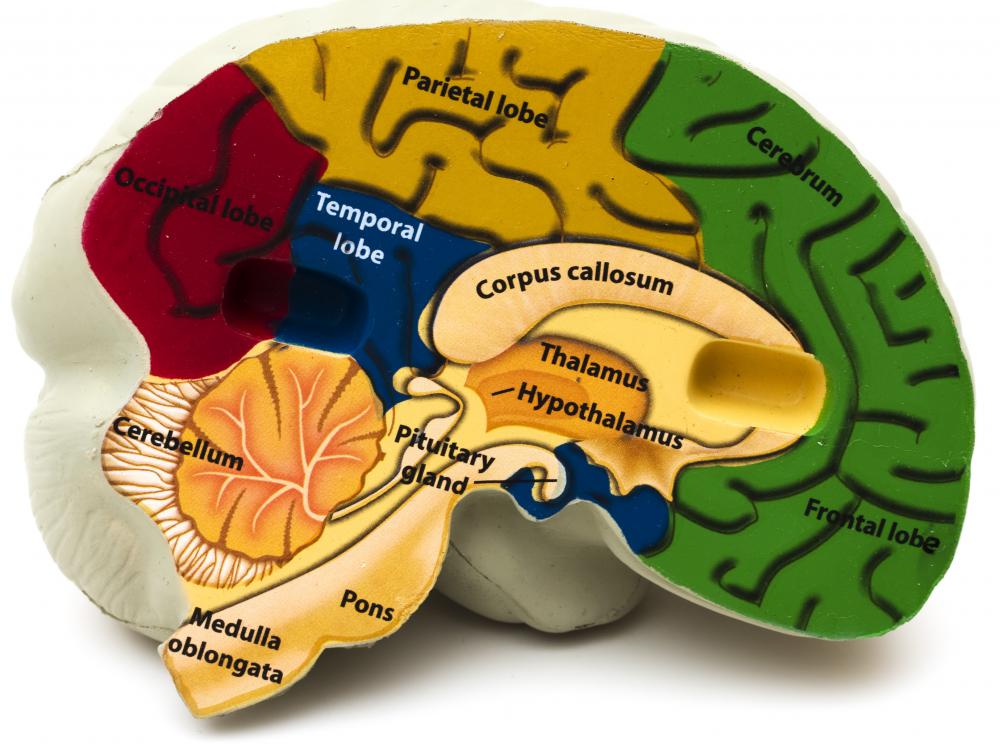At WiseGEEK, we're committed to delivering accurate, trustworthy information. Our expert-authored content is rigorously fact-checked and sourced from credible authorities. Discover how we uphold the highest standards in providing you with reliable knowledge.
What are the Different Types of Ataxia Symptoms?
Ataxia is a condition that affects muscle coordination, slowing down movements and causing what would normally be voluntary and simple muscle movements to be erratic. Ataxia symptoms can thus manifest themselves across all parts of the body—in eye movements, arm and leg movements, in speech, and even in one's ability to swallow properly. This loss of muscle control can be a result of many different diseases and conditions that affect the cerebellum. Aside from neurological diseases, ataxia symptoms can also be derived from alcoholism or from defective genes.
One of the most recognizable symptoms of ataxia is an unsteady and uncoordinated walking style. People dealing with this symptom may experience what is known as a stomping gait. They may exhibit a lack of balance, which if severe enough, could cause them to trip and stumble frequently. Walking symptoms can be helped with aids such as canes and walkers. In the most severe cases, ataxia can completely curtail the ability to walk.

Erratic eye movements are another one of the classic ataxia symptoms. Affected individuals may exhibit slow eye tracking, juxtaposed by uncontrollable rapid eye movement. Such symptoms can greatly impair vision. If the condition causing the ataxia is treatable, erratic eye movement possibly could be improved.
Ataxia symptoms can also manifest themselves in one's speech, for a number of reasons. Muscles in the lungs and vocal cords can become erratic or relaxed, leading to a lack of control over pitch and tone. It may become harder to properly pronounce words, resulting in a slurred, drunken-sounding effect. Individuals affected in such a manner may have to work hard, possibly with the aid of therapists, to try and normalize speaking functions.
One of the most dangerous of the ataxia symptoms is an increased inability to swallow properly. The muscles involved in swallowing can become impaired, and the brain less able to properly control them. As a result, one might find it increasingly difficult to swallow food. With therapy, and depending upon the severity of the ataxia, swallowing functions usually can be improved. Modified eating tools can also help affected individuals.
Symptoms can also manifest themselves in small, everyday tasks that are often taken for granted, such as tying one's shoes, dialing numbers on a phone, or buttoning up a shirt. Therapy and special aids can help make such problems more livable. For example, one could resort to slip-on shoes, invest in phones with oversized numbers, and wear clothes without buttons. Individuals can also work with therapists to improve coordination. They might also enlist the aid of a living assistant.
AS FEATURED ON:
AS FEATURED ON:











Discuss this Article
Post your comments